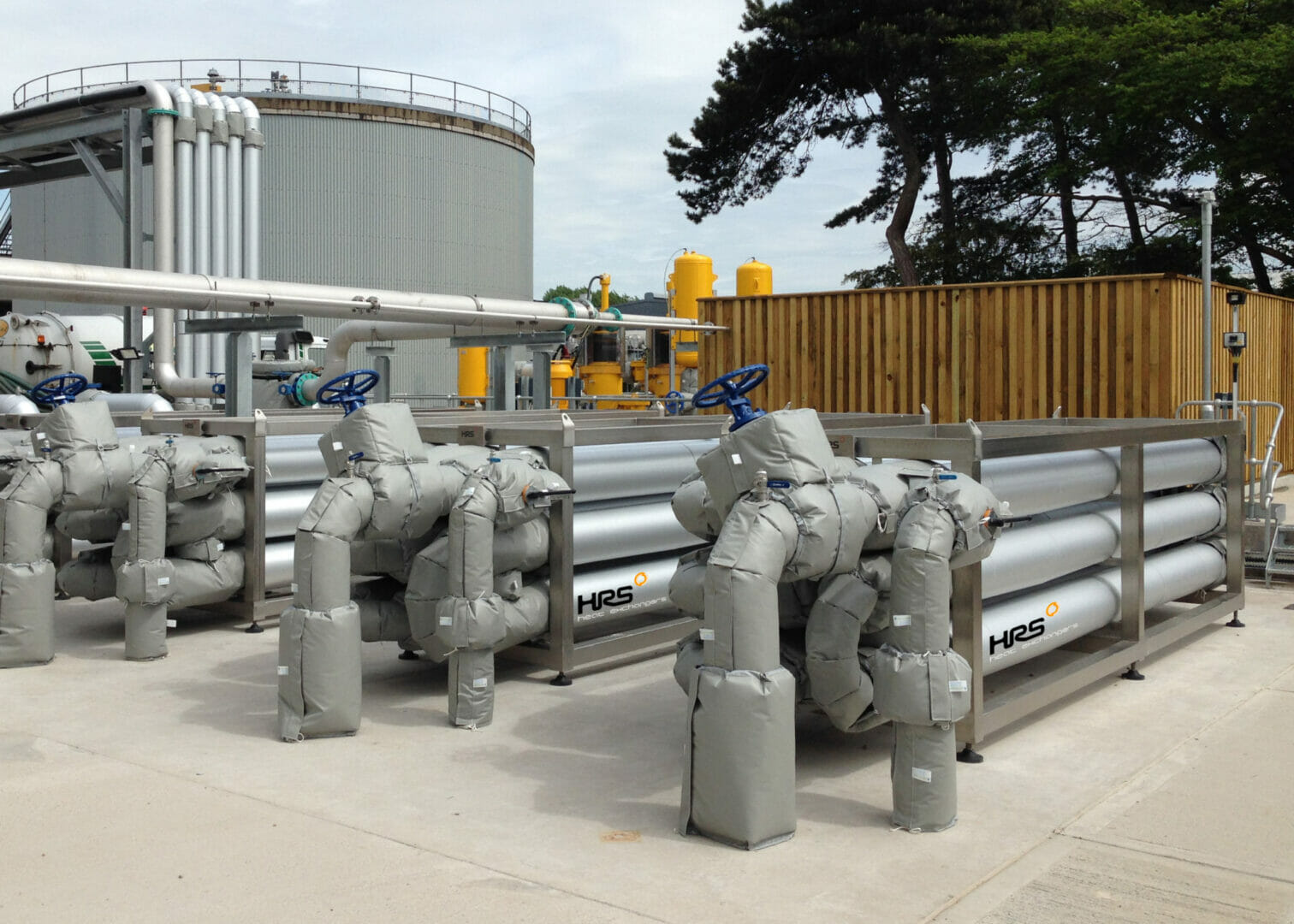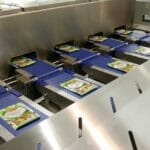Spiral heat exchangers (SHEs) are synonymous with the treatment of slurries and wastewater which have a high fouling risk and often contain fibres and solid materials. However, in many situations the performance of a corrugated tube heat exchanger is equal to or better than that of a spiral design.
In theory SHEs offer greater thermal efficiency than smooth surface tubular designs due to their large surface area and true counter-current flow. However, this assumes efficient operation at all times. In practice fouling frequently occurs, interfering with thermal transfer.
Corrugated tube designs also reduce fouling. The tube-in-tube HRS DTI Series is also a true counter-current heat exchanger, however, unlike SHEs, the use of HRS corrugation technology increases heat transfer and operational efficiency, while also minimising fouling.
The design of SHEs can create turbulent flow which is claimed to reduce the likelihood of fouling, producing ‘self cleaning’ effects, although this claim often becomes ‘virtually no fouling and clogging’ – something very different.

SHEs are often said to be easy to clean, yet it is common to have to remove 40-50 bolts to open the unit. Replacing bolts with hinges and C-clamps makes opening easier, but requires more space for installation, while the internal brackets which give the heat exchanger its rigidity make cleaning difficult.
The corrugated tubular design of the HRS DTI Series reduces fouling in a number of ways. The tube-in- tube design offers a much larger channel than spirals; reducing blockages. The corrugated inner tube encourages turbulence, which increases heat transfer and reduces fouling and the tubes within the DTI Series are easy to clean and maintain. Removable bends improve access, and there are no expensive gaskets to replace.
Unlike SHEs, corrugated tubes can easily be removed for inspection, cleaning and maintenance and a variety of flange connections are available. Should the heat exchanger suffer internal damage, the failed section can be easily bypassed by moving the interconnecting bends; a replacement can be manufactured and fitted when it is ready. In contrast, if a spiral is damaged, the complete heat exchanger must be removed to a workshop where many layers have to be cut out to access the point of failure.
In many situations a corrugated tube heat exchanger, like the HRS DTI Series, is the best solution for challenging materials such as sludge. However, in the most extreme cases with a very high fouling risk, it will be necessary to use a scraped-surface heat exchanger such as either the HRS rotating R Series or the patented reciprocating Unicus Series.









